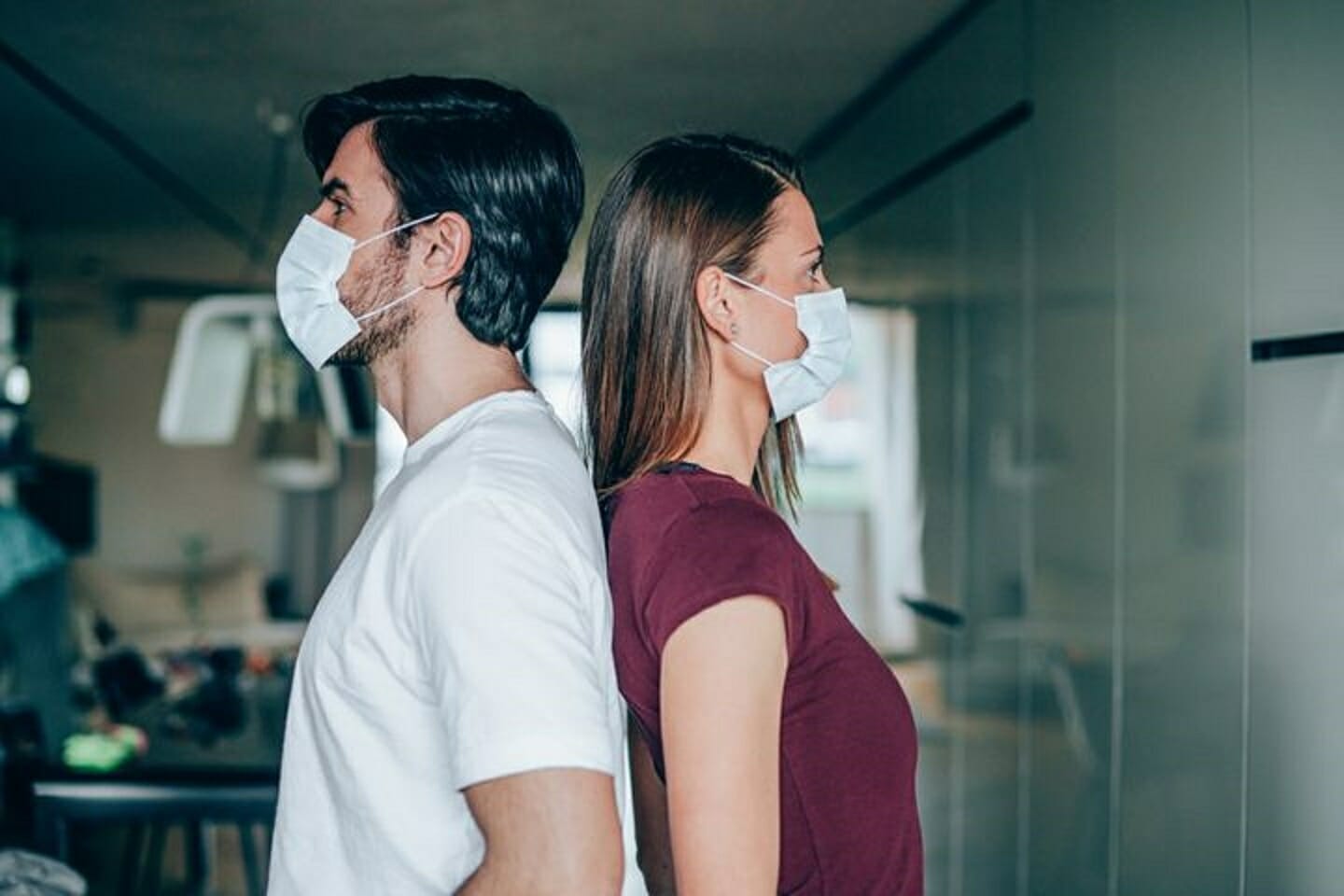Power Industry
For people in many parts of the world, electricity is easy to take for granted. We flip a switch and it’s there.
But that reliability is no accident: it’s the result of round-the-clock efforts by armies of dedicated men and women. During the COVID-19 pandemic, power industry utilities have been working tirelessly to keep hospitals, government services, and communications systems powered up and running. I think of them as the invisible first responders, always there, behind the scenes — and I’m proud to have the chance to work with such an inspiring group of people.
The way utilities have responded to the COVID-19 crisis has revealed many things about the capabilities of the industry today:
Power industry are dedicated.
I believe the culture at utilities is among the best in the world, from the corporate level to individual employees. In the fight against COVID-19, the best and brightest have hunkered down in their operations centers, working long, hard hours to keep the grid running. Instead of going home, many teams are napping in RVs parked at their facilities, staying on-site so they can pick up the next shift and, in some cases, working all night to power-up new field hospitals.
Power industry are social partners.
Utilities have always been committed to the communities they were created to serve — and that really shone through with this pandemic. Some have decided to keep providing service even when customers aren’t paying, putting public safety ahead of the bottom line. Others are working in partnership with governments and customers on flexible payment plans or payment relief measures, such as waiving late fees and suspending collections activities, because they know people and businesses are going through tough times.
Power industry are fueled by reliability.
Utilities have recognized the value of building a digital platform on top of their electric grid to provide real-time monitoring and control in addition to managing critical assets. These platforms have been key to providing dependable service during the pandemic. They were built with zero compromises on redundancy, reliability, security, or disaster recovery — setting the standard for industrial private networks. They have allowed utility staff to work remotely, providing the platforms for fault detection, isolation, recovery, and other operations essential to keeping service flowing.

Opportunities to strengthen power industry post-pandemic
While COVID-19 has emphasized the inherent strengths of utilities, it has also highlighted opportunities for continuous improvement going forward:
Stronger near-term planning and strategies
With so many people sheltering in place at home, residential demand has reached an almost sustained peak scenario — while commercial and industrial demand has plummeted.
COVID-19 has also opened the eyes of companies in all sectors to the importance of business continuity planning. For utilities, redundancy and disaster recovery plans will take on new importance and many will also need to develop replacement strategies for operations-critical systems (if they don’t already have them). Utilities will also re-evaluate the depth of the digital platform to extend deeper into mid and low-level voltage distribution sites and cover a wider range of use cases. Utilities will drive to a strategy where the digital platform almost completely mirrors the physical electrical delivery network, especially in distribution.
A focus on AI, automation and remote control
Grids are increasingly moving to distributed generation and battery storage. That configuration, combined with the kinds of rapid, unpredictable demand shifts we’ve seen with COVID-19, will require faster decision-making closer to the grid edge on how to balance supply and demand for system reliability and safety. Utilities will need to extend remote visibility/control and automated protection functions into tier 2/3 substations. Utilities will also want to introduce more practical AI and machine learning applications into the distribution grid and control centers, for further increases in grid automation.
Breaking ground on long-term projects
Looking further ahead, there are a few key areas utilities will want to explore. Cybersecurity, for example, is becoming more important every day as power industry grids are increasingly targeted by hackers. Utilities will want to implement multi-layered protection to secure the system from end to end.
Connectivity itself is evolving. Low-latency 4.9/5G networking has arrived and utilities have the opportunity to trial it in their operations. In most cases, this will begin with select use cases (such as using drones to inspect power industry lines) before it gets widely adopted for private and semi-private networks.
The pandemic has also highlighted society’s need for secure, reliable, pervasive broadband communications. Some utilities may embrace the idea of becoming “neutral hosts” for telecoms services, using their infrastructure to extend broadband to rural areas. The 5G backhaul requirement is also presenting an opportunity for utilities to implement a multi-tenant 5G backhaul platform. In many cases, utilities are examining extending their tight engagement with the city to implement “Smart City” as a Service concept.
A heartfelt “thank you” to an entire industry
As we go through this exceptional time in history, I believe it is important for all of us to pause and reflect on the critical role our utilities play. The expression “Keeping the lights on” certainly takes on new and more purposeful meaning. I thank all utility workers everywhere for their work and dedication. Based on what I’ve seen and heard, I have full confidence in the ability of today’s power industry to meet this challenge — and any others that may come down the road.
Other COVID-19 Updates
COVID-19: SOCIAL IMPACT
GineersNow Distributes PPE to Medical Workers
Israeli Cured COVID-19 Patients Using Placenta
COVID-19: HARVARD BUSINESS SCHOOL
Harvard Talks: Engineering Sector’s Organizational Development
Harvard Talks: Engineering Leaders Will Engage in Teaming
Harvard Covid-19 Strategy on How to Reopen a Country
Harvard Talks: Forward-Thinking Engineering Leaders
Harvard Talks: Engineering Operation Impact of COVID-19
Harvard Talks: 7 Leadership Principles in the Time of COVID-19
Harvard Talks: Engineering Work Culture After COVID-19 Pandemic
Harvard Talks: 7 Leadership Principles in the Time of COVID-19
Harvard Talks: Cut Salaries or Cut People?
Harvard Talks: The Supply Chain in Post COVID-19 Era
COVID-19: WORLD HEALTH ORGANIZATION
WHO Preparedness and Response to COVID-19
WHO Q&A: COVID-19 and Influenza Comparison
COVID-19: CONSTRUCTION
Construction Force Majeure During COVID-19
Converting Existing Building to COVID-19 Hospital – WHO Guidelines
WHO COVID-19 Buildings & Tents Screening Layout Standards
COVID-19: HVAC
COVID-19 Hotel is a Huge HVAC Nightmare
Ventilation Standards for Buildings Converted to COVID-19 Hospitals
Air Filtration for COVID-19 Treatment Centers
ASHRAE on COVID-19 HVAC Concerns
COVID-19: ENERGY
Oil Price Crashes Below $0 per Barrel
Coronavirus will accelerate the growth of renewable energy solutions
COVID-19: ECONOMIC IMPACT
COVID-19 Economic Impact Analysis
COVID-19 Economic Aftermath on the Construction Industry
Postponed Exhibitions in the Philippines due to COVID-19
Cancelled Major Events Around the World Due to COVID-19
World Bank Gives $12 Billion to COVID-19 Affected Countries
COVID-19: VENTILATORS & PPE
UCLA Biodesign Fellow Focuses Biomedical Engineering Insights on Swabs Shortage
Philips Ventilator Respironics E30 for ICU COVID-19 Patients
Here’s the Tesla Ventilator Prototype
Lamborghini Medical Shields & Surgical Masks for Health Workers
UCLA Engineer Made a Ventilator from Hardware Items
Forecast Deaths, Hospitals & Ventilators: COVID-19 Impact, USA Full Report
Top 10 Largest Ventilator Manufacturers in the World
Metronic Ventilator Ramping Up Production
Engineers, Can You Help Build a DIY Ventilator for Hospitals?
PPE Shortage Endangering Health Workers Worldwide
COVID-19: STATISTICS & FORECASTS
COVID-19 Deaths to Reach 81,000 in US By June – Forecasts by IHME & Univ. of Washington
List of Government Officials Tested Positive in PH
COVID-19 War: 70K Physicians vs 109M Filipinos
Famous People Who Have Tested Positive for COVID-19
These Politicians Tested Positive for Coronavirus (COVID-19)
COVID-19 Philippines: DOH on Code Red Status
COVID-19: SCIENCE
100% Success Rate for Pluristem COVID-19 Treatment
What If There’s No Vaccine To Fight COVID-19?
COVID-19 Treatment: The Search Continues
Clean Air in Europe leads to 11K Fewer Deaths During Lockdown
Complete List of Companies Working on Coronavirus Vaccine
Tiger Tests Positive for Coronavirus at New York Zoo
COVID-19: PREVENTION TIPS
We Need Testing, Vaccine & Treatment, But Until That Happens, We Need This!
How to Create a COVID-19 Proof Workplace
Work From Home Tips for Engineering, Industrial & Tech Companies
Water is Our First Line of Defense Against COVID-19
The List of COVID-19 Disinfectants Approved by EPA
COVID-19: TECHNOLOGY
Robot Technology to Reinstate a COVID-Free Airport
How Artificial Intelligence Can Drive Greater Speed and Accuracy in Vaccine Development
Cyber-Criminals are Exploiting People’s Fears of COVID-19
COVID-19: MARKETING
How to Apply for Government Financial Assistance for SMEs
Harvard Talks: How Marketing Works During COVID-19
Rewriting Marketing in Times of COVID-19 Crisis?
Hyundai Motor Extends Warranties Due to COVID-19
Top 5 Most Traded Stocks During COVID-19
COVID-19: EDUCATION
Coaching Builds COVID-19 Resilience to Engineering Team
How COVID-19 Is Changing College Admissions Cycle in 2020
COVID-19: AVIATION
Can We Give Airline Financial Relief to Protect Their Jobs?
Airlines Around the World are Struggling to Survive
COVID-19: APAC Air Passenger Demand Dropped 65.5%
Emirates Airline Passenger Rules During COVID-19
Airlines Around the World are Struggling to Survive
Show Your COVID-19 Test Result at the Airport
The Most Modern Flying Hospital with ICU from Germany
COVID-19 Impact: 25 Million Jobs at Risk with Airline Shutdown
Airbus Gives 3D-Printed Hospital Visors to Health Workers
Airlines COVID-19 Analysis: Aviation Collapsed
Air Cargo Demand Down 3.3% due to COVID-19 Disruption
COVID-19 Financial Impacts in the Aviation Industry
COVID-19 Hits January Airline Passenger Demand, IATA




























